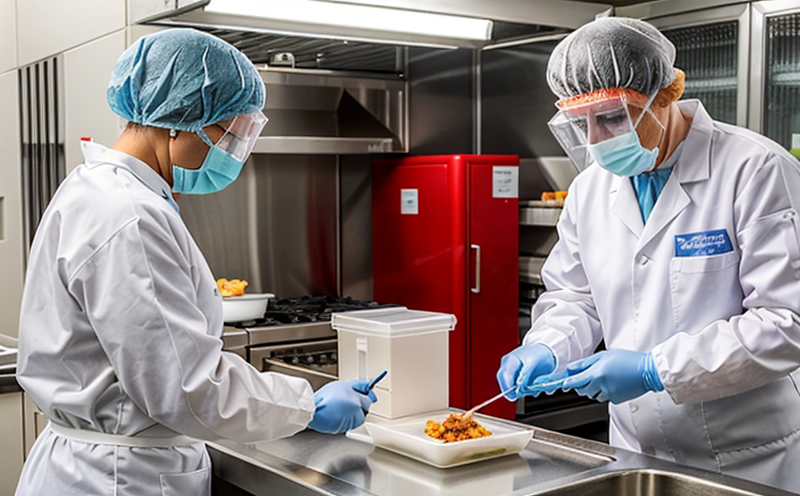EFSA Opinion on Hepatitis E Virus Testing in Pork-Based Products
The European Food Safety Authority (EFSA) has provided an opinion regarding the testing of Hepatitis E virus (HEV) in pork-based products. This opinion is crucial for ensuring food safety and public health, especially as HEV can be a significant concern in pork production due to environmental contamination.
HEV is a member of the Orthomyxoviridae family and has been recognized since 1980 when it was identified as a cause of non-A, non-B hepatitis. The virus primarily affects pigs but can also infect humans through contaminated food products such as pork. Pork production systems that involve direct contact between pigs and human handlers or insufficiently sanitized environments present higher risks for HEV transmission.
EFSA's opinion provides recommendations on the appropriate testing methods to detect HEV in pork-based products, which is essential for ensuring compliance with EU regulations related to food safety. The recommendations are based on scientific evidence and align with international standards such as ISO 13218:2016 and EN ISO/IEC 17025:2017.
The testing methods recommended by EFSA include both molecular techniques, like quantitative real-time PCR (qPCR), and serological assays. These tests are designed to detect the presence of HEV RNA or antibodies in pork samples. The choice between these methods depends on whether one aims at detecting active infections or past exposures.
The testing process begins with proper sample collection from pigs or raw meat products, followed by extraction of viral nucleic acids if using molecular techniques. For serological assays, blood sera are collected and tested for specific antibodies against HEV. The next step involves running the chosen test on the extracted samples according to manufacturer protocols. Finally, results must be interpreted within the context provided by EFSA's opinion.
This detailed testing procedure ensures accurate detection of HEV in pork-based products, thereby supporting food safety measures and protecting consumers from potential health risks associated with this virus.
- Sample Collection: Proper sample collection is critical for reliable test results. Samples should be taken under hygienic conditions to minimize contamination.
- Extraction Process: Extraction methods vary depending on the chosen testing method but aim at isolating viral nucleic acids efficiently.
- Testing Methodology: Depending on whether molecular or serological techniques are used, different instruments and reagents will be required. It is important to follow standard operating procedures strictly.
- Interpretation of Results: Results need careful interpretation considering the specificities of each test method as recommended by EFSA.
Scope and Methodology
The scope of this service encompasses the testing of HEV in pork-based products based on EFSA's recommendations. This includes ensuring that all tests adhere to international standards like ISO 13218:2016, which sets out guidelines for the detection of viruses in foodstuffs.
Our methodology involves several key steps:
- Sample Preparation: Samples are prepared according to established protocols ensuring they remain uncontaminated during processing.
- Viral Nucleic Acid Extraction (if applicable): For molecular tests, viral nucleic acids are extracted using approved methods to ensure accurate amplification.
- Molecular Detection: Real-time PCR is performed to quantify HEV RNA levels in the samples. This step involves careful calibration of reagents and precise sample handling.
- Serological Testing: Blood sera are tested for anti-HEV antibodies using immunoassays, which provide qualitative or quantitative measures of antibody presence.
- Data Analysis & Reporting: Results are analyzed thoroughly before being reported back to clients alongside detailed explanations and recommendations based on EFSA's guidelines.
The entire process ensures that the results are reliable and can be used effectively by food safety professionals in making informed decisions about product quality and potential risks associated with HEV.
Why Choose This Test
- Compliance with EU Regulations: By adhering to EFSA's recommendations, your organization ensures full compliance with relevant food safety regulations.
- Risk Management: Detecting HEV early helps implement necessary mitigation strategies before any significant issues arise in the supply chain.
- Informed Decision-Making: Accurate test results enable better decisions regarding product quality and consumer safety.
- Enhanced Reputation: Demonstrating commitment to high standards of food safety can significantly enhance your brand reputation among consumers and stakeholders alike.
- Scientific Rigor: Leveraging EFSA's scientific advice ensures that all aspects of the testing process are grounded in robust research and evidence-based practices.
- Cost Efficiency: Early detection allows for targeted interventions, potentially reducing costs associated with recalls or other corrective actions.
Selecting this service offers comprehensive support tailored to your specific needs within the pork industry. Our expertise ensures that you receive reliable, accurate, and actionable insights into HEV presence in your products.





